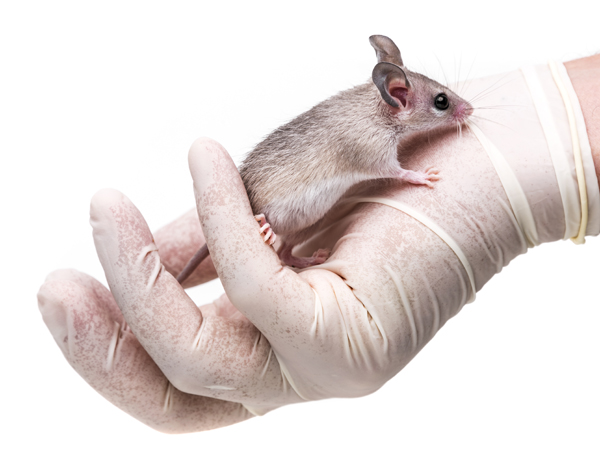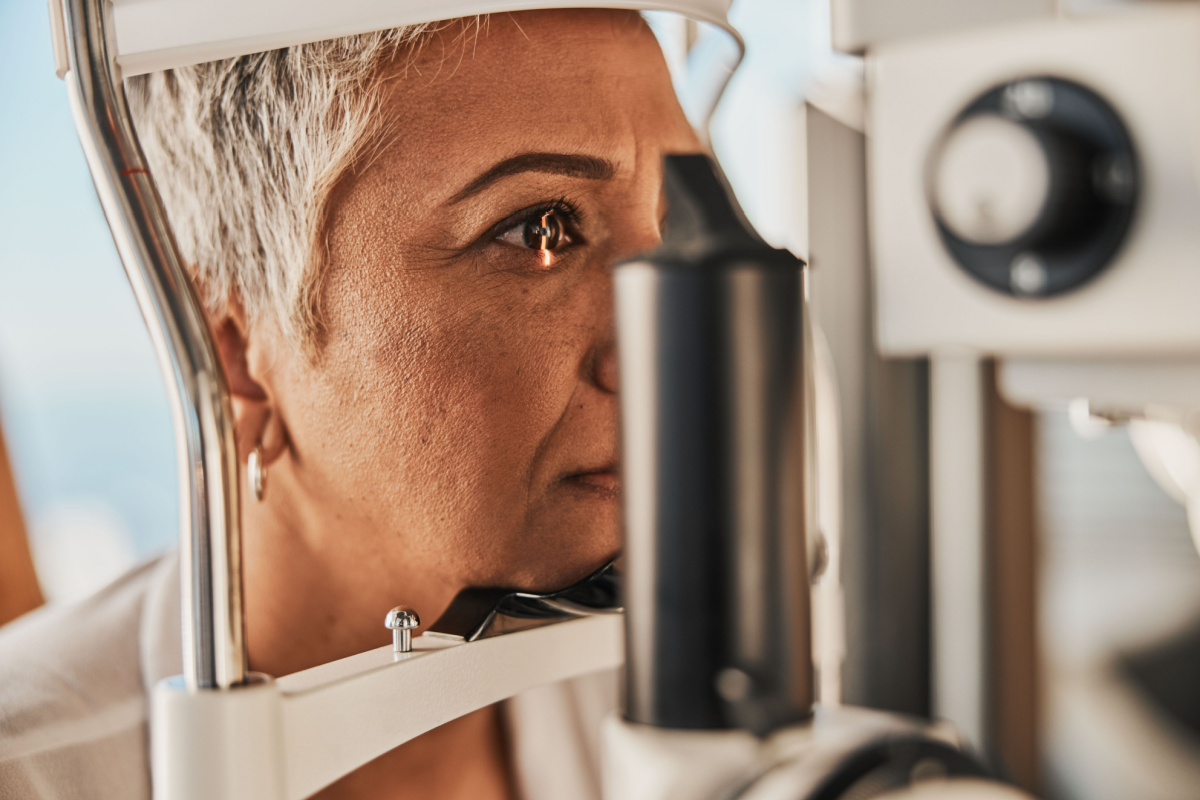Animal testing has played an integral role in the scientific method for thousands of years. Today, animals are still widely used for research purposes and the use of animal models during preclinical trials is an important step in the path to drug development. However, with the cost of developing a pharmaceutical product estimated at $2.6 billion – a figure that has more than doubled since 2004 – drug companies are increasingly looking for new ways to save money.
The disadvantages of using animals in the drug development process, as well as the currently approved alternatives to animal testing are reviewed in the first section of this article. Over the next few pages, three promising in vitro and in silico technologies, Modular Immune in vitro Construct (MIMIC), Organ-on-a-Chip and Computer Models of Adverse Drug Reactions, which could reduce the need for animals in research, are reviewed in more detail.
Drawbacks of Animal Testing
Animal testing is required by the Food and Drug Administration (FDA) in the early stages of candidate drug analysis, in order to collect sufficient data on the drug’s safety and efficacy. Pharmacokinetic and Absorption/Distribution/Metabolism/Excretion (ADME) studies are generally done using two species to understand both the effects of the drug in a living system, as well as how the body processes the drug.
New compounds must also be classified according to their acute toxicity; the LD50 is the lethal dose required to kill 50% of test subjects. The data collected during LD50 experiments in animals can be extrapolated to determine how the drug might function in a human system, and will be an important factor in determining if the substance gets approval for human trials.
All federally-funded research facilities are required to follow strict animal welfare guidelines set by the Canadian Council on Animal Care in Science (CCAS), the Institutional Animal Care and Use Committee (IACUC) in the US, and a number of Animal Welfare Bodies (AWB) as part of the European Commission including the National Centre for the Replacement, Refinement & Reduction of Animals in Research (NC3RS) in the UK. Additionally, practitioners must abide by the 3 R’s of research involving the use of animals, wherever possible:
- Replacement of animals with alternative in vitro and in silico models.
- Reduction in the number of animals used in the study.
- Refinement in the experimental design to optimize animal welfare.
These guidelines can make experimental design using animals as test subjects more complicated and may ultimately influence the results of the study.
Though animal testing has come under fire in recent years due to ethical concerns regarding the use of intelligent animals as test subjects, there are a multitude of other downsides to the use of animals in research. Firstly, animal testing is costly compared to other methods; it’s estimated that the US government spends between $12 and $14.5 billion annually on animal experimentation.
In addition, research animals require a substantial input of time for feeding and general care, as well as a significant amount of space for housing. The most compelling argument against the use of animals in research, is that physiological responses of a drug tested in an animal will never be a true predictor of the response of a human. Despite similarities between humans and laboratory animals – it is believed that we are approximately 99% genetically identical to chimpanzees – animal trials may show very different results compared to human trials.
Alternatives to Animal Testing Already in Use
While animals are still widely used in medical research today, there are some traditionally animal-based methods that have been replaced by faster, less-expensive non-animal assays. Until 1960, the principal bioassay for confirming a woman’s pregnancy was to inject her urine into immature rabbits to induce ovulation. This test relied on the presence of human chorionic gonadotropin (hCG) in the sample to induce ovulation in the rabbit, and confirm pregnancy. However, the similarity of hCG to another hormone, luteinizing hormone (LH), often made it difficult to distinguish the two, and accurate quantification of hCG levels was near impossible.
Before the advent of cell culture, all new cosmetic and topical products were required to be tested on animals to determine the potential for skin irritation. In the past 20 years, companies have developed multilayered human epidermal cell culture models to replace the need for animal testing, and provide more accurate results for the irritation potential of a product on human skin. These models include EpiDerm™ by MatTec Corporation and Episkin developed by SkinEthic, both of which are approved for use in Canada and the European Union.
The following is a review of some animal testing alternatives that are aim to both reduce the cost of drug testing as well as limit the number of animals needed for preclinical trials.
Modular Immune in vitro Construct (MIMIC)
The Modular Immune in vitro Construct (MIMIC) technology was developed by VaxDesign, a subsidiary of Sanofi Pasteur, as a high-throughput method for testing the immune system’s response to newly-developed vaccines. Described as a “Clinical Trial in a Test Tube™” by its developers, MIMIC utilizes donated human peripheral blood mononuclear cells (PBMCs) which contain immune cells such as monocytes, T cells and B cells.
To study the innate immune response of a vaccine, a Peripheral Tissue Equivalent Module (PTE) is constructed using endothelial cells layered over a collagen matrix, which serves as a model for human skin. The PBMCs are loaded onto the PTE and allowed to grow and differentiate. Without any external induction, the monocytes in the culture differentiate into dendritic cells – a type of antigen-presenting cell (APC). These dendritic cells can then be exposed to an antigen or a vaccine in order to stimulate an immune response.
The APCs from the PTE module can then be applied to a secondary substrate – the Lymphoid Tissue Equivalent Module (LTE) – which simulates the adaptive immune response found in the lymph nodes in the body. If the vaccine is a success, the antibodies produced by the tiny immune-system analog should be able to neutralize the disease target the next time it’s exposed to the cells.
Though some consider the MIMIC system to be an oversimplified version of the complex human immune system, there are many advantages to this technique over traditional animal models. Some vaccines appear to work well during animal trials, such as many of the experimental AIDS vaccines, but fail to be effective on humans. Because the MIMIC system uses a human immune cells, developers can get a better sense of a vaccine’s potential effectiveness on the human immune system.
“The information you get from this type of test is far and beyond what you’d get out of a mouse study, both because it’s humans and because you can see the effect across a spectrum of genotypes,” says Michael Rivard, former vice president of corporate development at VaxDesign.
In addition, since the MIMIC system can be performed in a 96-well plate, with each well representing a genetically-distinctive test immune system, it takes up considerably less space and is higher throughput compared to animal testing. Along with the epidermal model, VaxDesign is also developing systems which mimic other common pathogenic routes-of-entry such as the lungs, the nasal mucosa and the intestinal lining.
Organ-on-a-Chip
So-called Organ-on-a-Chip models have been developed as a way to test the effect of a drug on individual organs on a small, microfluidic scale. These miniature 3-D cell culture organ systems mimic all of the processes of their regular-sized counterparts including gas exchange, electrophysiological responses and fluid filtration.
To date, Organ-on-a-Chip models have been developed for many of the body’s major organs including the lung, kidney and heart. Their main advantage over traditional 2-D and 3-D cell culture is the chip’s clear and flexible design, which allows researchers to use a multitude of imaging techniques to study the mock organ’s processes.
The chip design also allows for the arrangement of single cell types opposite one another along a porous membrane, allowing the exchange of cellular products. In addition, researchers can study disease states using the chips and test the efficacy of various vaccines and drugs to get an idea of how those therapies may function in vivo.
Researchers at the Wyss Institute at Harvard in Cambridge Massachusetts, have studied what happens when bacteriological pathogens enter through our airway using a Lung-on-a-Chip. The scientists introduced the bacteria into a hollow channel lined with lung cells known as the “air channel”. They then injected white blood cells into an adjacent channel lined with capillary cells acting as the “blood channel”, which was connected to the lung cell channel by a flexible, porous membrane. Using fluorescent microscopy, they were able to visualize migration of the white blood cells across the capillary wall and through the membrane to the air channel where they attacked and killed the invading bacteria, as they would in a normal human lung.
Currently whole-body Human-on-a-Chip models are being developed in order to study the systemic effect of a drug on the human body. This automated Human-on-a-Chip would include individual vital organs on chips connected in a way that mirrors fluid flow between organs in the body. The ability to study the effects of drugs on human cells organized in an anatomical way has a distinct advantage over animal models; human cells in culture will behave in much the same way as human cells in the body.
“Our ultimate goal, which is high risk, is not only to develop disease models but to develop an integrated body-on-a-chip, where we can start to link these organs, moving us a step closer to mimicking the whole human response,” says Wyss lead staff scientist Geraldine Hamilton.
Computer Models of Adverse Drug Reactions
Identifying adverse drug reactions (ADRs) of new pharmaceuticals is a huge challenge for drug developers today. It is estimated that 100,000 people in the US die each year as a result of ADRs, which are often not apparent until after the drug has hit the market.
In response to this problem, researchers at the Computational Engineering Division, Lawrence Livermore National Laboratory (LLNL) in Livermore California, have developed an in silico, structure-based screening assay to identify potential unintended targets of drug candidates. This computer model can be used early on in the drug development process to decrease the chances of a drug failing in the final phases of development due to an ADR.
“We need a way to determine the safety of such therapeutics before they reach patients. Our work can help direct such drugs to patients who will benefit the most from them with the least amount of side effects,” commented Monte LaBute, lead author of the research and a researcher from LLNL’s Computational Engineering Division.
By using databases containing known ADRs for FDA-approved drugs, and statistical probabilities of drug-to-protein binding, the researchers were able to develop predictive models for theoretical drugs before any in vitro research on those drug candidates had been completed. To test the efficacy of this program, the researchers used the computer model to test the interaction ability of 560 small-molecule, approved drugs with 409 potential human protein targets.
Of the 409 potential protein targets, only 21% were identified as known targets of the drugs tested; 322 were found to be off-target drug-to-protein interactions. From this result, the researchers were able to predict 85 potential side effects of the drugs which were grouped into 10 ADR classes as diverse as vascular and psychological disorders.
While computer modelling of ADRs still has some limitations – namely computational speed and power, as well as the current lack of a complete set of human metabolomic data for reference – it has the potential to be a valuable tool in drug development. Early detection of ADRs in the initial phases of drug development would not only prevent the needless spending of valuable R&D dollars, but would also reduce the number of animals used in preclinical trials.
A Future Without Animal Testing?
Though considerable advances have been made to develop in vitro and in silico technologies to test drug efficacy, toxicity and identify potential adverse reactions, the application of animal testing in the drug development process is still a necessity. Current technology used to mimic the complexity of the human body in a closed system is still not representative enough to completely render animal testing unnecessary. Due to their physiological and anatomical similarity to humans, animals are still required to collect vital PK and toxicological data before the candidate drugs can move to the next phase of human clinical trials.
In an effort to encourage innovation in non-animal testing methods, some companies have offered financial incentives in the form of prize grants. The European Partnership for Alternative Approaches to Animal Testing (EPAA) offers the 3Rs Award worth €3,000 to scientists who have made an outstanding contribution to the field of alternatives to animal testing.
The Lush Prize, is a £50,000 award offered to individuals, research groups or organizations that develop novel technologies which replace the need for animals in research, and offer a significant improvement over existing technologies.
Previous winners of the Lush Prize include Professor Roland Grafström and Dr. Pekka Kohonen, of the Karolinska Institutet in Sweden, whose lab focuses on replacing repeated-dose toxicity testing in animals with cell culture models. Grafström and Kohonen are also partners in the development of the online database of toxicological data ToxBank, which houses in vitro- and in silico-derived data for the prediction of in vivo toxicity of a substance.
In 2004, the use of animal testing in the cosmetics industry in the EU was banned, along with the marketing of any products or ingredients that have been tested on animals. Though this industry is far less regulated than the pharmaceutical industry, is it possible to imagine a future in which animal testing is no longer necessary in vaccine and drug development?
What do you think about potential alternatives to animal testing? Will the use of animals in the drug development process ever be completely unnecessary? Share your views in the comment section below!
Sources:
- Tufts Study Finds Big Rise In Cost Of Drug Development – http://cen.acs.org/articles/92/web/2014/11/Tufts-Study-Finds-Big-Rise.html
- The Beginnings: Laboratory and Animal Studies – http://www.fda.gov/drugs/resourcesforyou/consumers/ucm143475.htm
- LD50 Test – http://oacu.od.nih.gov/regs/documents/IRAC_LD50.pdf
- Canadian Council on Animal Care in Science – http://www.ccac.ca/en_/about
- International Animal Care and Use Committee – https://www.aalas.org/iacuc#.Vcj55_lVhHw
- National Centre for the Replacement, Refinement & Reduction of Animals in Research – https://www.nc3rs.org.uk/
- The Three Rs – http://www.understandinganimalresearch.org.uk/how/three-rs/
- Feds spend up to $14.5 biollion annually on animal testing – http://dailycaller.com/2013/10/05/feds-spend-up-to-14-5-billion-annually-on-animal-testing/
- Bonobos join chimps as closest human relatives – http://news.sciencemag.org/plants-animals/2012/06/bonobos-join-chimps-closest-human-relatives
- A timeline of pregnancy testing – http://history.nih.gov/exhibits/thinblueline/timeline.html
- EpiDerm Data Sheet – http://www.mattek.com/EpiDerm/data-sheet
- Episkin – http://www.episkin.com/news00010615.asp
- VaxDesign – http://www.vaxdesign.com/
- Putting immunity in a test tube – http://content.time.com/time/health/article/0,8599,1725904,00.html
- The Wyss Institute – http://wyss.harvard.edu/viewpage/461/
- Organs-On-Chips – http://wyss.harvard.edu/staticfiles/pdf/Microfluidic%20organs-on-chips.pdf
- LaBute, M., Zang, X., Lenderman, J., Bennion, B., Wong, S., and Lightstone, F. (2014). Adverse drug reaction prediction using scores produced by large-scale drug-protein target docking on high-performance computing machines. PLOS ONE. 9 (9). – http://www.plosone.org/article/fetchObject.action?uri=info:doi/10.1371/journal.pone.0106298&representation=PDF
- 3 Rs Award – http://ec.europa.eu/growth/sectors/chemicals/epaa/3rs-awards/index_en.htm
- Lush Prize – http://www.lushprize.org/awards/science-prize/
- Karolinska Institutet in Sweden – http://ki.se/en/imm/startpage
- ToxBank – http://toxbank.net/
- EU Ban on Animal Testing – http://ec.europa.eu/growth/sectors/cosmetics/animal-testing/index_en.htm
- Organ-on-a-Chip Mimics Deadly Lung Condition – http://www.technologyreview.com/news/506896/organ-on-a-chip-mimics-deadly-lung-condition/
- Supercomputers link proteins to adverse drug reactions – http://www.scientificcomputing.com/news/2014/10/supercomputers-link-proteins-adverse-drug-reactions












Join or login to leave a comment
JOIN LOGIN